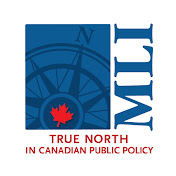The so-called middle class is the prized demographic for Canada’s politicians, pandered to at every opportunity in election campaigns, as the voting bloc most Canadians see themselves belonging to.
Nearly every major party has pitched some kind of middle-class tax cut or break on the campaign trail, in cuts that would take billions out of the federal coffers each year.
But the way Canadians personally define the middle class has shifted, in a time when the typical hallmarks of that lifestyle — like owning a home or taking annual vacations — are increasingly out of reach for younger adults.
The Organization for Economic Co-operation and Development defines a member of the middle class as anyone who earns between 75 per cent and 200 per cent of the median household income after tax.
Based on the most recent Statistics Canada data, that’s a wide range — anywhere from $52,875 to $141,000.
…









![Bible group called 911 about man later arrested in ramming of Vancouver arena, police say [Video]](https://canadanewsvideo.com/wp-content/uploads/2025/06/mp_774964_0_pacificcoliseumJPG.jpg)
![Trump bans citizens of 12 countries from entering U.S., citing national security [Video]](https://canadanewsvideo.com/wp-content/uploads/2025/06/mp_774414_0_UOQYD6DYBZCFPDQTKEN3S5OXHAjpg.jpg)
![G7 protests to be livestreamed to leaders in Kananaskis to give protesters a voice [Video]](https://canadanewsvideo.com/wp-content/uploads/2025/06/mp_772625_0_CP174620804jpg.jpg)
![Health minister wont intervene on forcing addictions treatment - National [Video]](https://canadanewsvideo.com/wp-content/uploads/2025/06/mp_773153_0_marjoriemicheljpg.jpg)
